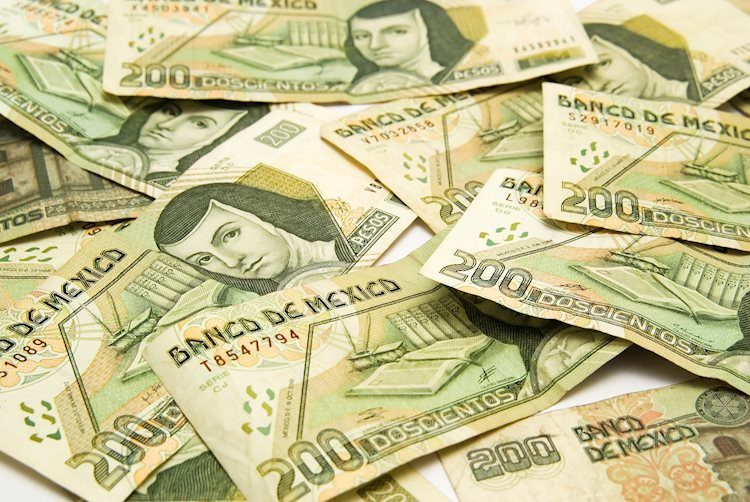
- The Mexican Peso counterattacks following Banxico’s decision.
- Mexico’s central bank kept rates at 11.25%, and maintained the tone of the November meeting.
- USD/MXN edged lower, extending its losses below 17.20.
Mexican Peso (MXN) advances steadily against the US Dollar (USD), after the Bank of Mexico (Banxico) decided to keep rates unchanged at 11.25%, for the sixth straight meeting, suggesting “the reference rate must be maintained at its current level for some time.” At the time of writing, the USD/MXN is diving more than 0.40%, exchanging hands at around 17.16.
Banxico’s statement acknowledged that most global central banks are holding rates unchanged at a time when worldwide economic activity is expected to decelerate in the fourth quarter of 2023. However, the bank stressed that despite the continuation of the disinflation process, the economic outlook is challenging, and due to the shocks the Mexican economy faces, it decided to keep the ongoing course set in March 2023.
In the meantime, the USD/MXN continued to be driven by the effects of the Federal Reserve’s (Fed) dovish pivots, along with Banxico’s restrictive stance. Therefore, the exotic pair could be set to finish the year below the psychological 18.00 figure if not for external shocks and global geopolitical events.
Daily Digest Market Movers: Mexican Peso supported by Banxico’s decision
- In the monetary policy statement, Banxico mentioned, “the balance of risks for the trajectory of inflation within the forecast horizon remains biased to the upside.”
- The Bank of Mexico upward revised their inflation projections for some quarters.
- Banxico’s policymakers mentioned that inflation in November increased slightly “as a result of a rise in the non-core component.” They acknowledged that underlying inflation decreased for the same month. Their expectations for headline inflation for 2023 decreased while core inflation increased.
- Meanwhile, the USD/MXN gathered some traction after strong US economic data. US Retail Sales in November rose by 0.3% MoM above estimates for a 0.1% decline.
- At the same time, the US Bureau of Labor Statistics (BLS) revealed that Initial Jobless Claims for the week ending December 9 jumped by 202K, less than the 220K forecast and last week’s 221K reported.
- The latest Federal Reserve’s decision to hold rates and its pivot towards easing policy in 2024 might keep the USD/MXN undermined below the 18.00 figure toward the end of the year, barring a surprise by Banxico.
- Fed officials expect to lower the federal funds rates (FFR) to 4.60% in 2024, though they remain data-dependent.
- The Summary of Economic Projections (SEP) updated by policymakers suggests the US economy would grow 2.6% in 2023, up from September’s 2.1%, while headline inflation is expected to dip below 3% from 3.3% and core to slide towards 3.2% from 3.7%,.
- Fed Chair Jerome Powell’s failure to push back against aggressive rate cut bets sent the Greenback plummeting to a 4-month low.
- Money market futures estimate the Fed will slash rates by 141 basis points toward the end of next year, twice the Fed’s forecasts of three 25 bps cuts.
Technical analysis: USD/MXN buyers target 100-day SMA
The USD/MXN bias remains neutral after touching yearly lows below the 17.00 figure, and since mid-September, the exchange rate has stabilized at around the 17.00-18.48 range. At the time of writing, the pair hit the 100-day Simple Moving Average (SMA) at 17.40 but retreated toward the 17.30 area, with traders awaiting Banxico’s decision.
For a bearish continuation, the pair must drop below the current week’s low of 17.18, which could expose the area of 17.00-17.05, a solid support level reached in November. If those two levels are surpassed, then the pair could challenge the year-to-date (YTD) low of 16.62.
On the flip side, buyers need to reclaim the 100-day SMA to challenge strong resistance at the 200-day and 50-day SMAs, at 17.53 and 17.62, respectively.
Interest rates FAQs
Interest rates are charged by financial institutions on loans to borrowers and are paid as interest to savers and depositors. They are influenced by base lending rates, which are set by central banks in response to changes in the economy. Central banks normally have a mandate to ensure price stability, which in most cases means targeting a core inflation rate of around 2%.
If inflation falls below target the central bank may cut base lending rates, with a view to stimulating lending and boosting the economy. If inflation rises substantially above 2% it normally results in the central bank raising base lending rates in an attempt to lower inflation.
Higher interest rates generally help strengthen a country’s currency as they make it a more attractive place for global investors to park their money.
Higher interest rates overall weigh on the price of Gold because they increase the opportunity cost of holding Gold instead of investing in an interest-bearing asset or placing cash in the bank.
If interest rates are high that usually pushes up the price of the US Dollar (USD), and since Gold is priced in Dollars, this has the effect of lowering the price of Gold.
The Fed funds rate is the overnight rate at which US banks lend to each other. It is the oft-quoted headline rate set by the Federal Reserve at its FOMC meetings. It is set as a range, for example 4.75%-5.00%, though the upper limit (in that case 5.00%) is the quoted figure.
Market expectations for future Fed funds rate are tracked by the CME FedWatch tool, which shapes how many financial markets behave in anticipation of future Federal Reserve monetary policy decisions.
- SEO Powered Content & PR Distribution. Get Amplified Today.
- PlatoData.Network Vertical Generative Ai. Empower Yourself. Access Here.
- PlatoAiStream. Web3 Intelligence. Knowledge Amplified. Access Here.
- PlatoESG. Carbon, CleanTech, Energy, Environment, Solar, Waste Management. Access Here.
- PlatoHealth. Biotech and Clinical Trials Intelligence. Access Here.
- Source: https://www.fxstreet.com/news/mexican-peso-falls-against-us-dollar-on-solid-us-economic-data-ahead-of-banxico-decision-202312141601
- :has
- :is
- :not
- $UP
- 11
- 16
- 17
- 2%
- 20
- 2023
- 2024
- 220K
- 25
- 28
- 30
- 32
- 33
- 40
- 53
- 9
- a
- above
- acknowledged
- activity
- advances
- After
- against
- aggressive
- along
- an
- analysis
- and
- Animate
- anticipation
- ARE
- AREA
- around
- AS
- asset
- At
- attempt
- attractive
- average
- awaiting
- back
- Balance
- Bank
- Banks
- base
- basis
- BE
- bearish
- because
- below
- Bets
- bias
- biased
- boosting
- borrowers
- Bureau
- bureau of labor statistics
- but
- buyers
- by
- case
- cases
- Cash
- central
- Central Bank
- Central Banks
- Chair
- challenge
- challenging
- Changes
- charged
- claims
- CME
- component
- content
- continuation
- continued
- Core
- core inflation
- Cost
- could
- country’s
- course
- Currency
- Current
- Cut
- cuts
- data
- December
- decided
- decision
- decisions
- Decline
- decreased
- depositors
- Despite
- Digest
- Dip
- diving
- Dollar
- dollars
- Dovish
- driven
- Drop
- due
- each
- easing
- Economic
- economy
- effect
- effects
- end
- ending
- ends
- ensure
- estimate
- estimates
- events
- example
- exchange
- Exchange rate
- exchanging
- Exotic
- expanded
- expect
- expectations
- expected
- extending
- external
- faces
- Failure
- Falls
- FAQ
- Fed
- fed funds rate
- Federal
- federal reserve
- Federal Reserve’s
- Figure
- financial
- Financial institutions
- finish
- Flip
- following
- FOMC
- For
- Forecast
- forecasts
- Fourth
- from
- funds
- future
- Futures
- gathered
- generally
- geopolitical
- Global
- Gold
- Greenback
- Grow
- Hands
- Have
- headline
- help
- High
- Hit
- hold
- holding
- holds
- horizon
- How
- However
- HTTPS
- if
- in
- Increase
- increased
- inflation
- inflation rate
- influenced
- initial
- instead
- institutions
- interest
- Interest Rates
- investing
- Investors
- IT
- ITS
- jerome
- jerome powell
- jobless claims
- jpg
- Keep
- kept
- labor
- Last
- latest
- LEND
- lending
- less
- Level
- levels
- LIMIT
- Loans
- losses
- Low
- lower
- lowering
- Lows
- make
- mandate
- many
- March
- Market
- Markets
- May..
- means
- meantime
- meeting
- meetings
- mentioned
- Mexico
- might
- module
- mom
- Monetary
- Monetary Policy
- money
- Month
- more
- most
- Movers
- moving
- moving average
- must
- Need
- Neutral
- next
- normally
- November
- of
- officials
- on
- ongoing
- Opportunity
- or
- Other
- overall
- overnight
- paid
- pair
- Park
- Peso
- Pivot
- Pivots
- Place
- placing
- plato
- Plato Data Intelligence
- PlatoData
- points
- policy
- policymakers
- Powell
- price
- process
- projections
- psychological
- Push
- push back
- pushes
- Quarter
- raising
- range
- Rate
- Rates
- reached
- reference
- remain
- remains
- Reported
- Reserve
- reserves
- Resistance
- respectively
- response
- Restrictive
- result
- Results
- retail
- Retail Sales
- Revealed
- Rise
- Rises
- risks
- ROSE
- s
- sales
- same
- Savers
- sent
- set
- shapes
- side
- Simple
- since
- sixth
- Slide
- SMA
- SMAs
- Soars
- solid
- some
- Stability
- stance
- starts
- Statement
- statistics
- steadily
- straight
- Strengthen
- strong
- substantially
- Suggests
- SUMMARY
- support
- support level
- Supported
- surpassed
- surprise
- Target
- targeting
- than
- that
- The
- The Area
- the Fed
- their
- then
- therefore
- they
- this
- those
- though?
- three
- time
- to
- TONE
- tool
- touching
- toward
- towards
- traction
- Traders
- trajectory
- Twice
- two
- underlying
- updated
- Upside
- upward
- us
- US banks
- US Dollar
- US economy
- US Retail Sales
- USD
- usually
- View
- week
- weigh
- when
- which
- while
- will
- with
- within
- worldwide
- would
- writing
- year
- yearly
- zephyrnet

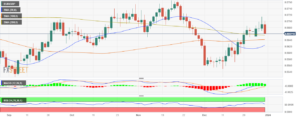

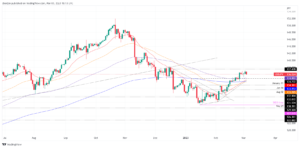


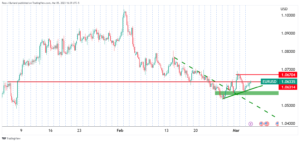
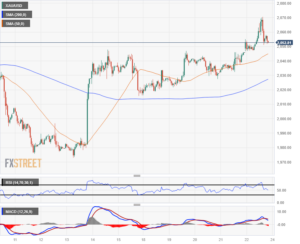


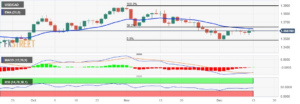
![NASDAQ stock market report [Video]](https://platoaistream.com/wp-content/uploads/2023/08/nasdaq-stock-market-report-video-300x200.jpg)
